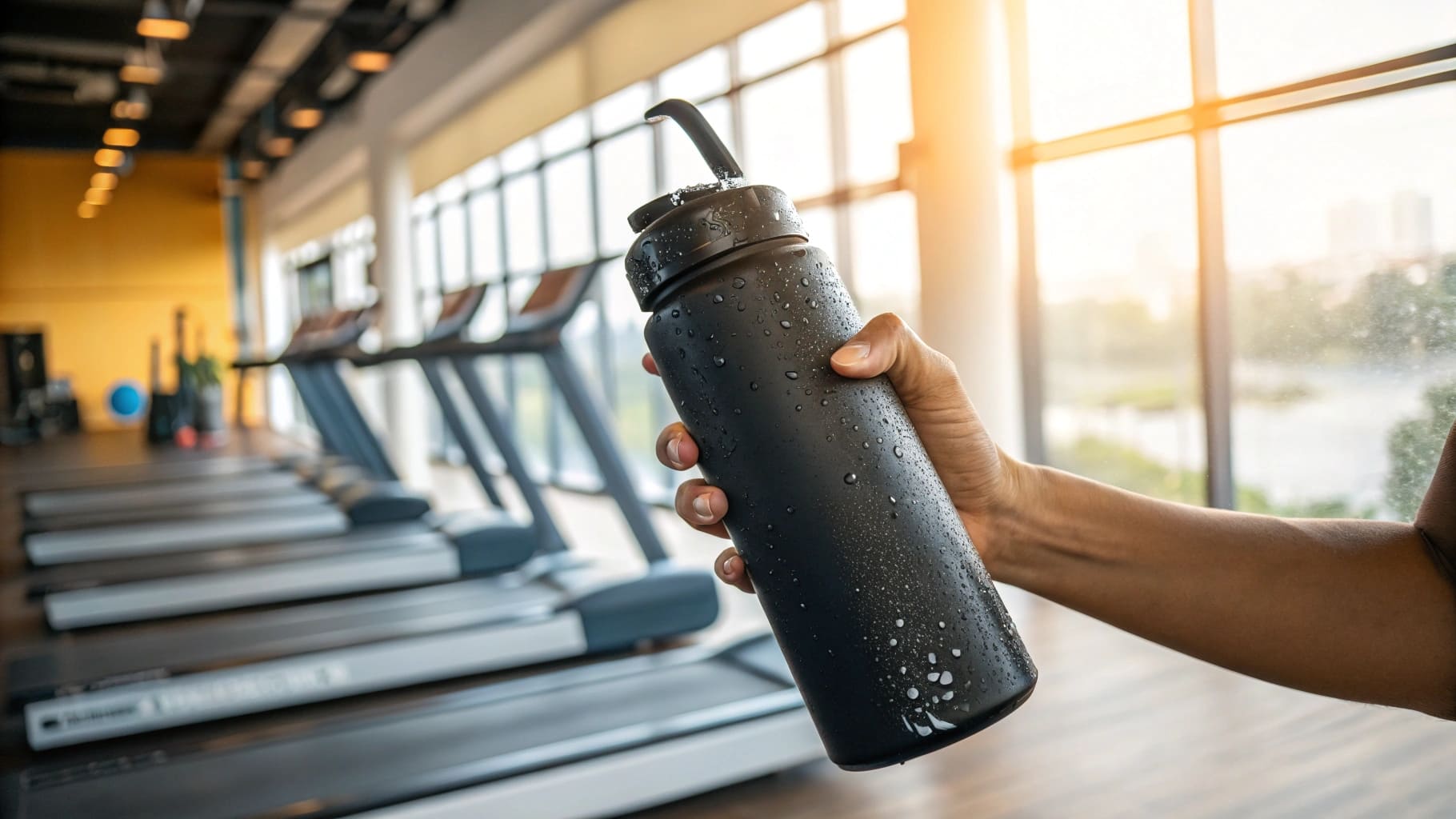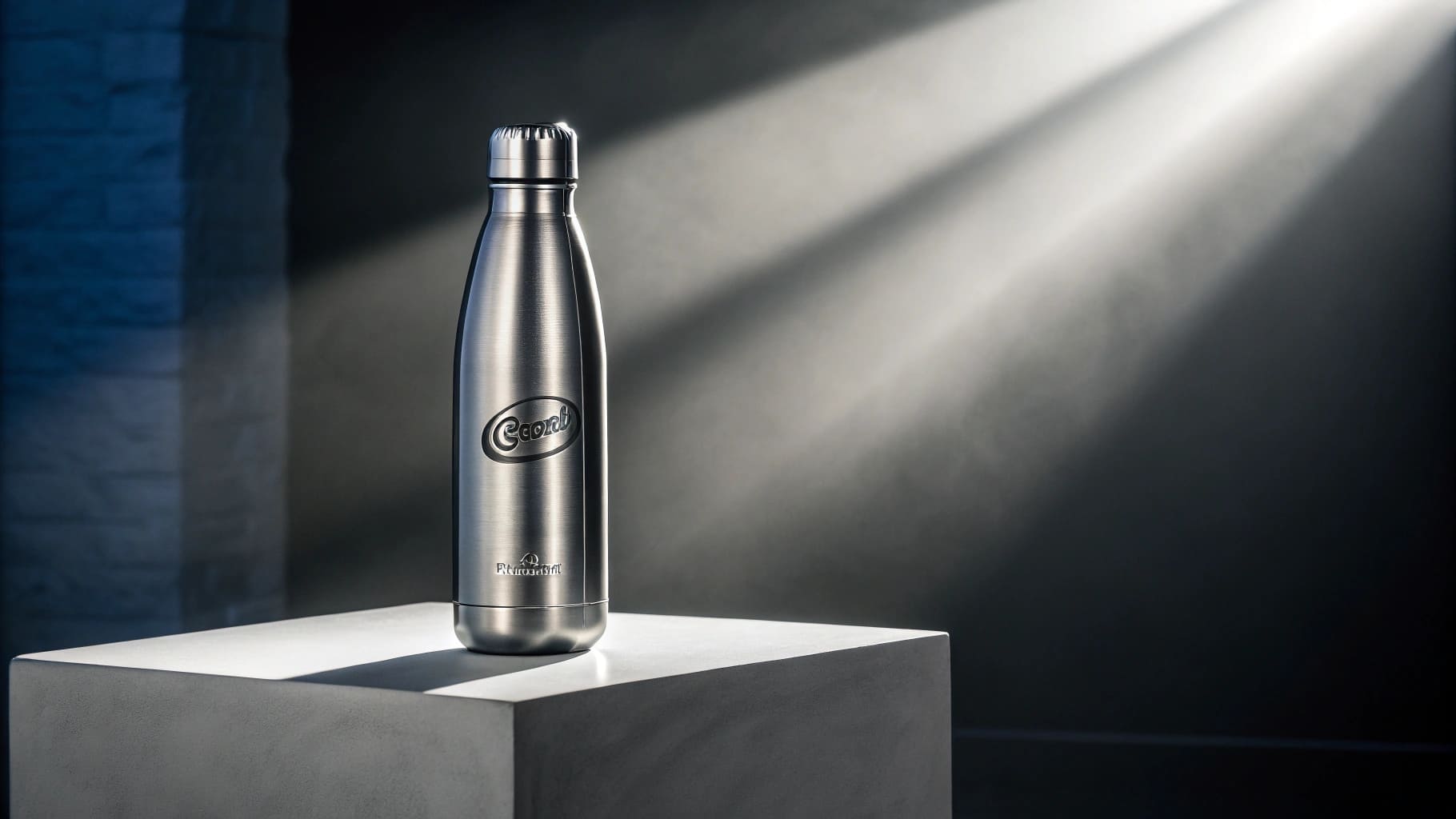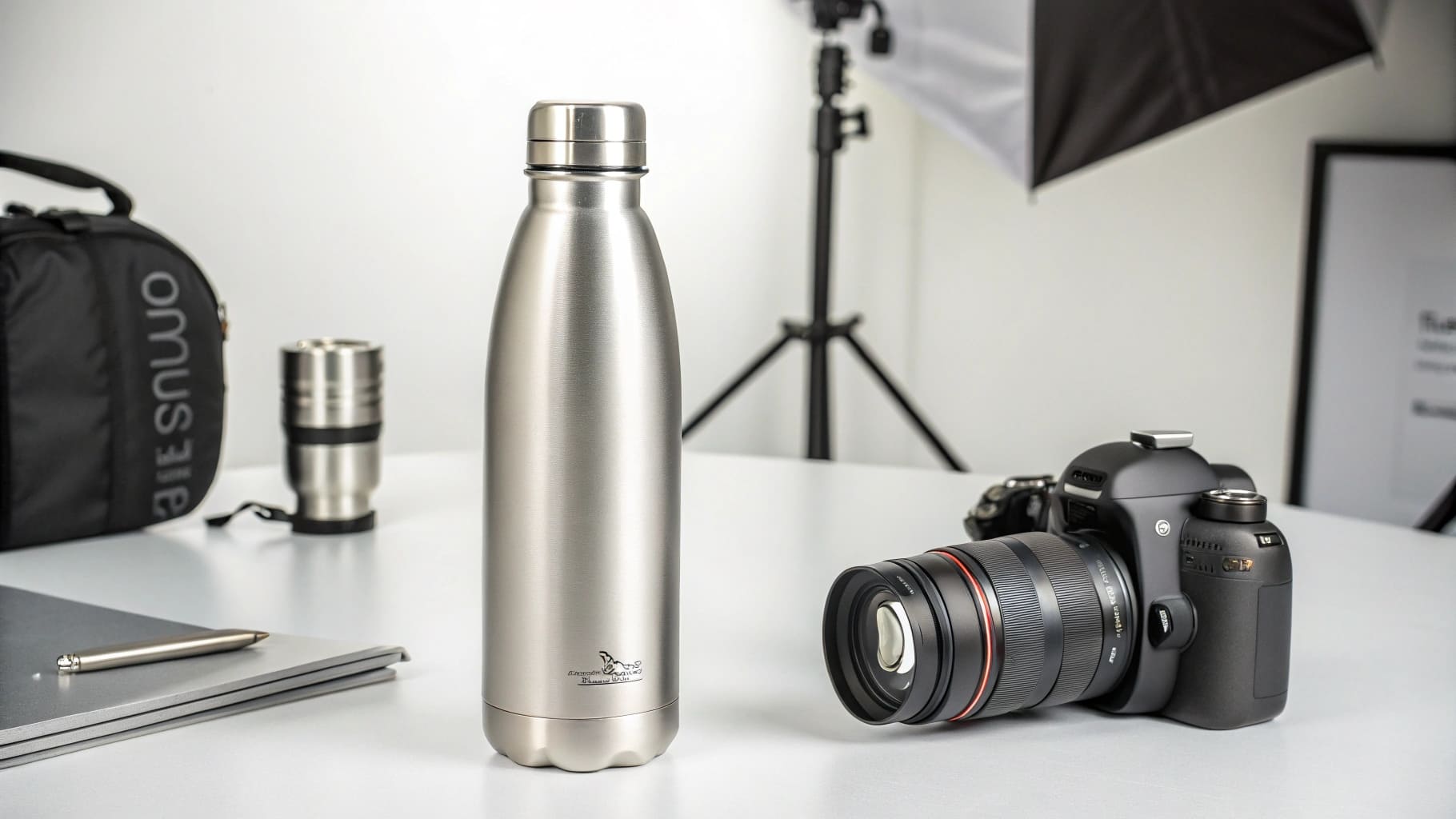Tired of sifting through endless online listings for eco-friendly bottles? Finding quality suppliers can feel like a shot in the dark. I'm here to guide you through sourcing top-notch stainless steel water bottles with confidence.
Buying eco-friendly stainless steel water bottles online means focusing on food-grade materials like 304 or 316 stainless steel. These options are durable, highly recyclable, and importantly, they don't leach harmful chemicals, ensuring both a sustainable and healthy product for your customers.

Navigating the world of online sourcing for these products can seem complex at first. But with a bit of insight, it becomes much clearer. It’s not just about the "eco-friendly" label; it's about understanding what truly makes a bottle a good choice for the planet and for health. Let's break down what you, as a B2B buyer, should look for to ensure you're making the best purchasing decisions for your business and your clientele.
Are stainless steel water bottles really the green choice they seem?
Feeling overwhelmed by all the "eco-friendly" claims out there? It's easy to get lost in greenwashing, making your purchasing decisions tougher. Let's clearly define the true environmental benefits of stainless steel water bottles.
Yes, high-quality stainless steel water bottles are a genuinely eco-friendly option. Their remarkable durability means a very long lifespan, significantly cutting down on the need for single-use plastics. Plus, stainless steel is highly recyclable at the end of its life, making it a truly sustainable choice.

When I talk to B2B buyers, like Mark Shenng from Canada, the question of genuine eco-friendliness always comes up. He needs to assure his customers that the products he imports and rebrands are truly sustainable. So, what makes a stainless steel bottle an environmentally sound choice? It's more than just the material itself; it involves its entire lifecycle.
Understanding True Eco-Friendliness in Stainless Steel
The biggest win for the environment comes from reusability and longevity. Think about it: one stainless steel bottle can prevent hundreds, or even thousands, of disposable plastic bottles from ending up in landfills or our oceans. This direct reduction in plastic waste is a massive environmental benefit. As a business, highlighting this can be a powerful marketing point.
Key Factors: Production, Recyclability, and Lifespan
- Manufacturing Impact: Producing any new item has an environmental footprint, and stainless steel is no exception. It requires energy and raw materials. However, responsible manufacturers, like us at Icobottle, are increasingly focused on sustainable manufacturing processes1. This includes efforts to minimize energy consumption, reduce waste, and source materials responsibly. When you’re sourcing, don’t hesitate to ask potential suppliers about their production practices.
- Superior Recyclability: Stainless steel is one of the most recycled materials on the planet. It can be melted down and repurposed into new high-quality products repeatedly, without any degradation in its properties. This "closed-loop" potential is a cornerstone of a circular economy.
- Extended Lifespan: These bottles are built to last. Unlike plastic bottles that can crack, warp, or retain odors, stainless steel bottles can withstand daily use for many years. This durability further enhances their eco-friendly profile because fewer replacements are needed over time.
Let's look at a simple comparison to illustrate the point:
| Feature | Stainless Steel Water Bottle | Single-Use Plastic Bottle |
|---|---|---|
| Lifespan | Many Years | Hours to Days |
| Reusability | Excellent, designed for reuse | Low, often discarded after one use |
| Recyclability | High (virtually 100% recyclable) | Lower, often downcycled or not recycled |
| End-of-Life Impact | Recycled into new steel products | Often contributes to pollution |
For B2B buyers, the takeaway is to look beyond the surface. Inquire about the grade of stainless steel, the manufacturing standards, and any certifications that prove a commitment to sustainability. This diligence ensures you're not just buying a product, but also upholding genuine environmental values.
When it comes to health, what's the safest water bottle choice?
Worried about what might be leaching into your drinks from your bottle? Some materials can indeed release unwanted chemicals. Let's explore which water bottle materials stand out for being the healthiest options available.
The healthiest water bottles are typically made from food-grade stainless steel, such as types 304 or 316, or from glass. These materials are valued because they are inert; they don't react with beverages or leach chemicals, ensuring your water stays pure and safe.

For any procurement officer or business owner sourcing drinkware, the health aspect is non-negotiable. Your customers trust you to provide safe products. When I discuss product features with clients, especially those like Mark who are very attuned to quality for the Canadian market, the conversation always includes material safety.
Why Food-Grade Stainless Steel is a Healthy Champion
The term "food-grade" is key here. Specifically, Type 304 (also known as 18/8 stainless steel) and Type 316 (marine-grade stainless steel) are industry standards for high-quality, safe drinkware and food containers.
- Chemically Inert: These grades of stainless steel are non-reactive. This means they won't impart any metallic taste to your water, coffee, tea, or even acidic fruit juices. More importantly, they don't leach harmful chemicals, period.
- Naturally Free from Harmful Additives: Unlike many plastics, stainless steel doesn't contain BPA (Bisphenol A), phthalates, lead, or other toxins that have raised health concerns. This makes it an inherently safer choice right from the start.
- No Need for Internal Liners: This is a crucial point. Some metal bottles, particularly those made from aluminum, require an internal plastic or epoxy liner to prevent the metal from reacting with the contents. These liners can sometimes degrade, scratch, or leach chemicals themselves. High-quality stainless steel bottles don’t need such liners. The steel itself is the safe contact surface.
A Quick Health-Based Material Comparison:
| Material | Risk of Chemical Leaching | Contains BPA/Phthalates | Liner Often Required | Overall Health Rating |
|---|---|---|---|---|
| Stainless Steel (304/316) | Very Low / None | No | No | Excellent |
| Glass | Very Low / None | No | No | Excellent |
| Aluminum (with quality liner) | Low (if liner intact) | No (bottle), liner may vary | Yes (essential) | Good |
| Tritan™ Plastic | Low | No (BPA-Free) | No | Good |
| Polycarbonate Plastic (older) | Potential (BPA) | Yes (BPA) | No | Poor |
| Low-Quality/Unspecified Plastic | High | Potentially | No | Very Poor |
As a supplier, we at Icobottle make it a priority to provide full transparency regarding the materials used in our products. We readily share material safety data sheets (MSDS) and food-grade certifications. This is something I always advise B2B buyers to request from any potential supplier. It's about building trust and ensuring you're delivering a genuinely healthy product to your end-users.
Is regular washing really necessary for stainless steel water bottles?
Do you think stainless steel bottles are so tough they practically clean themselves? While durable, neglecting regular cleaning can lead to unwanted buildup. Let's get to the bottom of keeping your stainless steel bottle hygienic.
Yes, it is absolutely essential to wash your stainless steel water bottle regularly, ideally after each day of use. This simple step prevents the growth of bacteria, mold, and the development of odors, ensuring your water always tastes fresh and remains safe to drink.

It's a common misunderstanding. People often assume that because stainless steel is so resistant to rust and corrosion, and generally doesn't harbor bacteria as easily as porous materials like plastic, their bottles don't need frequent or thorough cleaning. However, for optimal hygiene and to maintain the fresh taste of your beverages, regular washing is key. This is important information for B2B buyers to pass on to their customers.
The Importance of Consistent Cleaning
Even the highest quality stainless steel isn't entirely self-cleaning when it comes to the residues of daily use.
- Preventing Bacterial Growth: Each time you sip from your bottle, you introduce microorganisms from your mouth. In the moist environment inside the bottle, these can multiply, especially if the bottle contains sugary drinks or is left at room temperature for extended periods.
- Avoiding Biofilm Development: Over time, a thin, slimy layer of bacteria and other microbes, known as a biofilm, can accumulate on the inner surfaces. While often invisible, biofilm can affect the taste of your water and isn't something you want to ingest.
- Eliminating Odors and Mold: If a bottle isn't aired out properly or if small amounts of liquid are left in it, musty odors can develop. In more extreme cases of neglect, especially around the threads of the lid or in complex cap mechanisms, mold can even start to grow.
Simple and Effective Cleaning Routines:
| Cleaning Action | Recommended Method | Frequency | Why It's Important |
|---|---|---|---|
| Daily Rinse | After use, rinse thoroughly with hot water. Swish it around and empty. | Daily, after each day's use | Removes immediate residues, minimizes overnight buildup. |
| Regular Wash | Use warm water, a mild dish soap, and a bottle brush to scrub all interior surfaces. | Every 1-2 days, or daily if using for non-water beverages | Cleans away biofilm, oils, and potential bacteria. |
| Lid and Mouthpiece | Pay special attention to the lid, threads, and any mouthpiece. Disassemble if possible. | With every regular wash | These areas are prone to gunk accumulation. |
| Deep Clean | Soak with a solution of white vinegar and water (1:4 ratio) or baking soda and water. | Weekly, or as needed | Helps to deodorize, sanitize, and remove stubborn stains. |
| Thorough Air Dry | Always allow the bottle and lid to air dry completely, separately and upside down. | After every wash | Prevents moisture retention, which can lead to mold/odors. |
When I supply stainless steel bottles from Icobottle, especially to discerning clients like Mark who prioritize the entire product experience for their customers, we often discuss the inclusion of care instructions. Providing clear guidance on how to maintain the bottle not only enhances customer satisfaction but also reinforces the quality and longevity of the product. It’s a small addition that can make a big difference.
Conclusion
Buying eco-friendly, healthy stainless steel bottles online is straightforward with the right focus. Prioritize material quality, verify sustainable practices from suppliers, and understand proper care.
-
Learn about sustainable manufacturing practices to ensure your purchases support eco-friendly production. ↩

